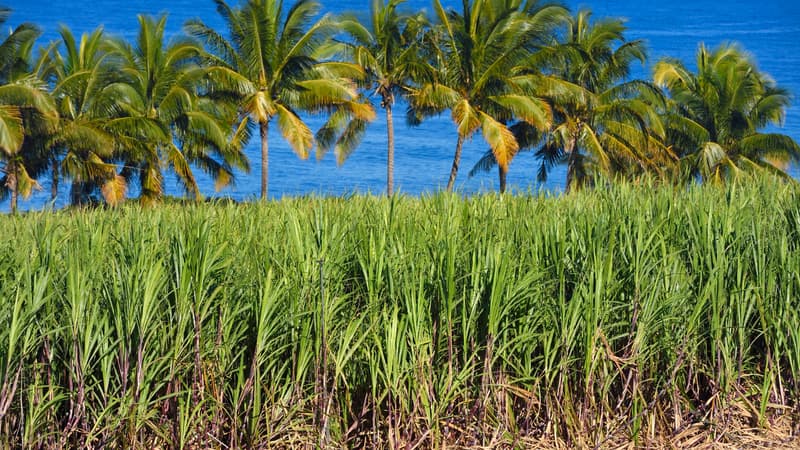More than 3,000 farms, half of the island’s agricultural land, but a “historically low” production despite massive aid: Réunion’s economic pillar, sugar cane, is losing strength, to the point that calls for greater diversification are increasing. For Dominique Clain, cane planter and president of the union United for Our Farmers (UPNA), the 2025 sugar campaign that will take place from July to December in Reunion already seems like a new blow to the head.
The cause: Cyclone Garance, which devastated crops at the beginning of the year. Although the island’s two factories are designed to produce two million tons of cane, planters will not deliver more than 900,000 this year. But this comes after an already “historically low” harvest in 2024 (1.13 million tons), according to the Réunion Chamber of Agriculture. The rum, cane sugar and heart of the local economy sector still employs around 10,500 people, of which 6,700 are permanent, according to state services. But its profitability has been eroding for years.
“We see more and more cane producers diversifying,” observes Stéphane Sarnon, president of the FDSEA, the majority union in the Chamber of Agriculture. “The sector is not profitable but we want to do everything possible to maintain it,” he argues, considering that we should “better value products such as molasses or bagasse”, cane fiber burned to produce electricity.
148 million euros per year
According to the sugar union, representative of the Tereos group (Béghin Say brand), the second largest player in the world and the only industrial player on the island, the sector faces “increasing competition from non-European countries” since the EU-Central America and Andean Community agreements, which came into force in 2013. To avoid going under, Tereos benefits from 44 million euros in public aid, in order to maintain jobs and support the transformation.
Producers benefit from aid from POSEI, which implements the common agricultural policy (CAP) in the outermost regions, and from subsidies that offset additional transport or production costs.
The result: for every ton sold at around 100 euros, between 70 and 80 come from public funds. “The industry only survives thanks to aid from the State and Europe,” acknowledges Dominique Clain. “We live on 75% of the aid,” he says. This dependency questions the island’s agricultural model. Sugarcane covers 22,600 hectares, or 53% of the agricultural area used. But this influence is diminishing: between 2019 and 2023, the areas declared for sugar cane decreased by almost 1,900 hectares, according to the Réunion Department of Agriculture (DAAF).
“If we want to move towards autonomy, dedicating so many hectares to sugarcane is not good,” acknowledges Laurent Boulanger, secretary general of the Rural Coordination of Reunion Island. For him, the issue is not “killing” the sugarcane, but rather rethinking its role. “It is part of the culture of Réunion and the sector is essential to maintain jobs. But we need to diversify farms even more,” he argues.
“Soon we will be a million”
Around 70% of Réunion’s fresh fruit and vegetable needs are covered by local production, making the island a good foreign student in terms of autonomy. Horticultural production tends to increase, “but for this trend to be confirmed, we would like state aid to be better distributed”, adds Laurent Boulanger. In the name of more ecological agriculture, the Oasis Réunion collective defends the same idea.
A Water Office report published in 2023 reported the presence of glyphosate in “relatively high concentrations” in Réunion rivers. And according to the DAAF, glyphosate “continues to be the most sold substance on the island, with almost 25% of total sales” of pesticides.
Source: BFM TV


